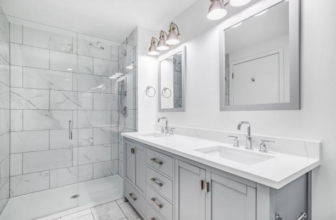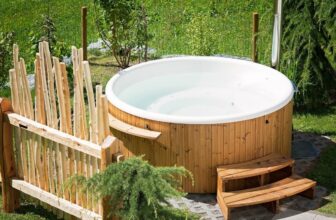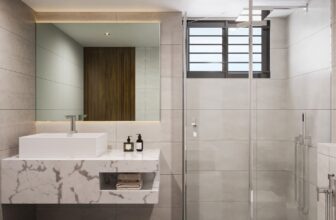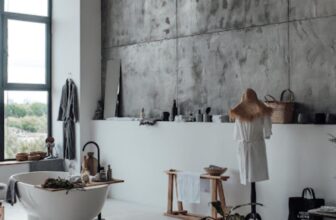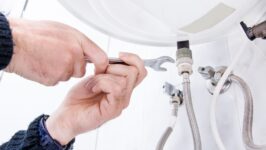
Energy-Efficient Upgrades for Commercial Plumbing: Saving Costs and Resources
Energy-efficient upgrades for commercial plumbing play a crucial role in both cost savings and environmental sustainability. One innovative solution gaining popularity is the use of a pipe camera for inspecting and maintaining plumbing supply systems. This advanced technology allows for a detailed examination of pipes, identifying potential leaks, blockages, or inefficiencies. By pinpointing specific issues, businesses can make targeted upgrades, such as installing low-flow fixtures, efficient water heaters, or incorporating smart water management systems.
Making smart and innovative advancements to your construction project’s plumbing equipment and insulation offers a cost-effective way to help clients cut expenses and preserve resources. Changing outdated utilities, fixing leaks in pipes and fittings, and enhancing insulation within plumbing lines decrease water consumption, heat loss, and energy bills. In this blog article, you’ll discover plumbing upgrades that you can consider incorporating into your home or commercial works.
16 Helpful Plumbing Upgrades for Your Project
Plumbing upgrades are pivotal for improving plumbing systems’ functionality, efficiency, and lifespan in residential or commercial settings. Presented below are different plumbing upgrade options that contractors, plumbers, and maintenance personnel should consider incorporating into construction projects:
- Water-efficient fixtures: Replace old-fashioned showerheads, faucets, and toilets with water-efficient models. These handy fixtures use less water without adversely affecting the utilities’ performance, help reduce water bills, and conserve resources. You can also consider safeguarding these fixtures with the Acudor UCSS universal access door cover panel that grants easy access toward plumbing cleanouts, maintaining the aesthetics and sanitation of your client’s structure.
- Tankless water heaters: Experts recommend upgrading tankless water heaters so your clients’ occupants can enjoy a hot water supply. They warm it as needed, eradicating the necessity for a storage tank and decreasing energy usage.
- Water filtration systems: Incorporate water filtration systems within your plumbing projects to elevate water quality by extracting odors, impurities, and other harmful contaminants. It’s especially critical if you’re constructing commercial spaces where water quality standards are strictly high.
- Sump pump systems: Consider installing sump pumps with battery backup to deter flooding in your basement. These specialized facilities are crucial in establishment areas vulnerable to heavy rainfall or water table problems.

- Smart plumbing technology: Integrate intelligent solutions such as Wi-Fi-enabled shut-off valves and leak detection sensors. These highly modernized systems alert and lead owners and maintenance personnel to leaks, allowing remote control over the water supply.
- High-efficiency toilets: Boost the toilets within your project and use top-performing ones that utilize a smaller amount of water per flush. It also helps in preserving and meeting contemporary water adeptness standards.
- Pipe insulation: Surround water pipes with insulating material. This can help trap the warmth within hot water lines, reducing the loss of heat as it travels throughout the home. It also prevents condensation from accumulating on the outside of cold water lines.
- Expansion tanks: Place them in closed-loop plumbing areas to accommodate water pressure fluctuations, reducing pipes’ stress and ensuring longevity.
- Grease traps: In restaurants or commercial kitchens, install grease traps to stop fats and grease from clogging pipes, lowering maintenance costs and discouraging blockages.
- Dual flush systems: Enforce dual-flush systems for your project’s bathroom toilets, which furnish a full flush for solid waste and a fractional flush for liquid waste, saving water.
- Pressure regulators: Install pressure regulators to guarantee an even water pressure throughout your building work’s plumbing facilities, dissuading deterioration and prolonging the life of appliances.
- Anti-scald valves: Integrate anti-scald valves in your plumbing work’s showers and faucets to control water temperatures from becoming dangerously hot, saving occupants from burns.
- Rainwater harvesting systems: If your budget permits, consider investing in rainwater harvesting systems that gather and store rainwater for non-potable usages like irrigation and flushing toilets, decreasing water use further.
- PEX piping: Replace outmoded plumbing materials with PEX (cross-linked polyethylene) piping. It is flexible, corrosion-resistant, and less prone to freezing than traditional elements.
- Water-recirculation facilities: Incorporate recirculation utilities that hold hot water continuously available at faucets, dwindling water waste associated with shelving for hot water to achieve desired temperatures.
- Drainage upgrades: Elevate your project’s drainage systems with bigger pipes and improved slopes to avoid clogs and backups in home and commercial settings.
Seek Professional Advice
You can ask professional help to make your commercial plumbing system more energy efficient. They can give valuable tips as to what models, brands, and types of plumbing fixtures you can upgrade into in your next commercial renovation project. Check this website to learn more about renovation services.
An experienced plumber can shed light to the installation process and timeline to help with proper planning and decision-making. Plumbing professionals have various credentials. For commercial plumbing, it’s crucial to hire a licensed and experienced commercial plumber who is well-versed in handling larger-scale plumbing systems.
Verify the plumber’s insurance coverage to protect against potential liabilities during the project. Confirm their familiarity with local building codes and regulations to ensure compliance. Effective communication skills are paramount for successful collaboration, and promptness and reliability are crucial, especially in commercial settings where delays can impact business operations.
Obtain detailed quotes with transparent pricing structures to understand the costs involved. Consider whether the plumber offers emergency services, as quick response times are essential in commercial spaces. Inquire about warranties or guarantees on the work performed to ensure quality and gain peace of mind.
Lastly, assess the plumber’s use of modern technology and equipment, as these elements can enhance the efficiency and effectiveness of the plumbing installation or repairs. Conducting a thorough evaluation based on these criteria will help you make an informed decision aligned with your specific project needs and expectations.
Final Thoughts
These plumbing upgrades became the keystone of modern excellence in the ever-evolving construction and maintenance landscape. By flawlessly integrating water-efficient fixtures, incorporating innovative smart technologies, and adding proactive measures, you can strengthen structures against old and new challenges.

Embracing these upgrades isn’t just an enhancement; it’s a commitment to sustainability, efficiency, and the satisfaction of clients who seek plumbing systems that stand the test of time. Your expertise in implementing these upgrades heralds a future where plumbing isn’t just about pipes but about building resilient, forward-looking spaces.

